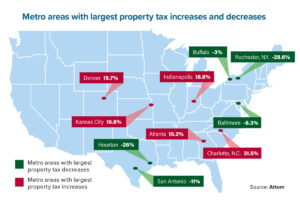It’s a fair bet that many of you have seen “Flip This House,” “Fixer Upper” or “Love it or List It,” which are popular cable TV shows that take viewers on a journey through various fix-and-flip housing projects. Did you ever wonder how to monetize that line of work yourself as a commercial mortgage broker?
Fix-and-flip loans, typically from private money lenders, are secured by residential collateral, but they are considered commercial loans because they involve nonowner-occupied investment properties. So, you can easily make them a part of your revenue stream as a commercial mortgage broker.
As the fix-and-flip craze has swept the nation, powered by media coverage and rising home prices, it has created a huge opportunity for additional income for mortgage brokers working with various types of clients. Whether they are lifelong clients looking to flip their first house, commercial clients starting a new business venture or new clients who have just come in through one of your marketing programs, the private-lending space for fix-and-flip deals can be very lucrative for them — and you.
Getting started
Most private-money fix-and-flip loans close in a shorter time period than conventional or government-backed loans, so these deals can supercharge a sales funnel for a loan originator or an entire office. Compensation for the mortgage broker is typically in the same ballpark as what is earned from handling a conventional commercial loan of similar size. So, it amounts to making the same money for less work.
There are many lending options that brokers can tap for borrowers working in the fix-and-flip market. Some of those financing options are local, some are regional and some are national platforms — making it easy to work with clients around the country. First, however, you need a game plan, and that starts with marketing.
You could begin by pushing out some marketing to your existing clients about fix-and-flip opportunities and financing. Maybe you could even tie in references to some of the popular fix-and-flip TV shows as a way to pique the interest of your target audience. Marketing concepts that relate to something your target audience is already familiar with are an effective way to connect what you are promoting to people’s daily lives.
Before you make any big moves in the fix-and-flip market, however, review your licensing. You likely already have a license or two hanging on the wall, but check with your compliance officer — if you work for a company that has one — or another expert to ensure that you have what you need on the licensing front to pursue fix-and-flip deals without running afoul of regulations.
It’s likely that if you just stick to the markets you are already licensed to serve as a mortgage broker, and to your existing client base, you will be in good shape as you break into the fix-and-flip niche. Lenders that you hope to be submitting loan packages to may have differing legal opinions on licensing requirements as well. So, find the handful of lenders that you work well with and give you good service, and go with them to start — just like you are doing with your other lines of business.
Small is good
Some commercial mortgage brokers make the mistake of thinking they are in too small a market to pursue fix-and-flip business. Alternatively, some brokers think that because they are not in one of the hot housing markets — such as Denver, Boston, San Francisco, Seattle or Phoenix — that there is not enough growth to support a fix-and-flip line of business.
That’s simply not the case. Even if you are in a second- or third-tier market, you can still find opportunities. A report released last year by Attom Data Solutions shows that, as of second-quarter 2017, among the markets posting year-over-year increases in home flipping were Baton Rouge, Louisiana (up 72 percent); Rochester, New York (up 24 percent); Modesto, California (up 24 percent); Birmingham, Alabama (up 22 percent); and Grand Rapids, Michigan (up 20 percent).
Even out-of-the-way communities like Fargo, North Dakota, hold opportunity. Fargo’s real estate price gains in recent years have made it one of the hotter post-recession “turnaround markets” in the country, according to real estate education company FortuneBuilders.
On another front, an article published this past June in USA Today points out that older urban neighborhoods in cities like Pittsburgh, Cincinnati, Minneapolis and Omaha, Nebraska, are undergoing a major revival as high-tech companies expand into the Midwest and other nontraditional tech markets. The article indicates that the trend has been picking up in the Midwest since 2014.
In fact, over the first five months of 2017, according to USA Today, more than a dozen Midwestern cities with emerging tech clusters — including Minneapolis, Detroit, Cleveland and Columbus, Ohio — have “welcomed more Bay Area transplants than vice versa.” The housing markets in these Midwestern cities are in a different class than the booming coastal markets of Boston, San Francisco or Seattle, but they are proof that fix-and-flip market opportunities exist in almost every part of the country.
• • •
For commercial mortgage brokers who are looking for that next opportunity, the fix-and-flip market could prove to be the vehicle for raising your business up a notch. If you agree, take some time to research the market in your area, develop a smart marketing strategy and then line up some good lending sources to start capturing that revenue.
Author
-

Tyler Stone is the founder and president of Capstone Financial, which specializes in privately funded loans for commercial and fix-and-flip investment properties. A national direct lender launched in 2010, Capstone has simplified underwriting processes for first-lien position investment and bridge financing. Programs range from streamlined fix-and-flip rehab loans to one-off funding for “makes-sense” deals.



